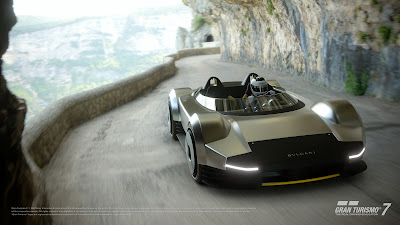Unique Designs - Creating unique and appealing motorcycle designs is no easy feat. It requires striking a delicate balance between functionality and aesthetics to satisfy the expectations of enthusiasts and buyers alike.
 |
| While motorcycles hold a special place in the hearts of automotive enthusiasts, occasionally, manufacturers miss the mark, and the following image serving for illustrative purposes only. (Pictures from: YankoDesign) |
Unfortunately, some manufacturers miss the mark and produce bikes with designs that leave us scratching our heads. Let's take a closer look at nine motorcycles with truly bizarre and unconventional designs.
1. The Odd Seat Design
Take the Suzuki Madura, for example. At first glance, it appears relatively normal, but upon closer inspection, you'll notice something peculiar about the seat. Instead of the usual elongated shape, it narrows down, forming an awkward curve intended to serve as a backrest. However, this design flaw results in discomfort for passengers, with limited space to sit comfortably.
 |
| 1984 Suzuki Madura, known for its peculiar seat design. (Picture from: IDNTimes) |
2. Big is Not Always Better
The Victory Vision challenges the notion that bigger is better. Despite its imposing size, the seat design leaves much to be desired, offering little room for passengers. One can't help but wonder why such a large bike fails to provide adequate seating space.
 |
| Are big motorcycles always a good choice? The 2007 Victory Vision challenges that notion entirely! (Picture from: IDNTimes) |
3. Comic Imagination Gone Awry
Yamaha's attempt to stand out with the RoadLiner backfired, resembling more of a failed comic illustration than a cutting-edge motorcycle design. With its uncanny resemblance to a certain caped crusader's sidekick's ride, it's hard to take this bike seriously.
 |
| This 2009 Yamaha Roadliner resembles a comic book flop on wheels. (Picture from: IDNTimes) |
4. Cool Colors, Uncool Design
KTM's 690 Duke may excel in performance, but its design leaves much to be desired. The vibrant orange-black color scheme intended to exude coolness ends up being an assault on the eyes, failing to complement the bike's sleek form.
 |
| The 2015 KTM 690 Duke's 'overly cool' color scheme might just hurt your eyes. (Picture from: IDNTimes) |
5. More Robot Than Motorcycle
Ducati Multistrada 1100S ventures into the realm of sci-fi with its robotic appearance. This bike seems like it's trying too hard to impress, overshadowing its functionality with an overly bulky frame and a disproportionately small seat.
 |
| Is the 2007 Ducati Multistrada 1100S a motorcycle or a robot in disguise? (Picture from: IDNTimes) |
6. Strange Tail, Strange Ride
Honda Valkyrie Rune's attempt to stand out with its unique tail shape falls flat. While its powerful engine promises high-speed thrills, the odd curvature of the tail raises doubts about its practicality and passenger comfort.
 |
| The 2004 Honda Valkyrie Rune, sporting an unusual tail shape. (Picture from: IDNTimes) |
7. Toy-Like Appearance
The Harley Davidson Road Glide Ultra resembles a blown-up version of a child's toy motorcycle. Its oversized front section and awkward seating arrangement make maneuvering this behemoth a daunting task, leaving passengers struggling to find a comfortable spot.
 |
| The 2017 Harley-Davidson Road Glide Ultra resembles a toy motorcycle. (Picture from: IDNTimes) |
8. Plastic Fantastic
Honda Pacific Coast (PC800) takes the concept of a touring motorcycle to a bizarre extreme. Covered almost entirely in plastic, it looks more like a toy than a serious mode of transportation, failing to live up to expectations despite its comfort on long journeys.
 |
| The 2015 Honda Pacific Coast (PC800) looks akin to a plastic toy motorcycle. (Picture from: IDNTimes) |
9. The Epitome of Weirdness
Harley Davidson Topper takes the prize for the weirdest motorcycle design ever made. With its hybrid electric scooter/bicycle appearance, it defies categorization and leaves onlookers perplexed.
 |
| The 1962 Harley Davidson Topper takes the title for the weirdest motorcycle design ever created. (Picture from: IDNTimes) |

In conclusion, while these motorcycles may have aimed for uniqueness, they ultimately missed the mark, leaving us questioning the designers' choices. Can you think of any other motorcycles with equally strange designs? The world of motorcycle design is vast and full of surprises, so who knows what peculiar creations the future holds?
Kept
spur your adrenaline on the power of two-wheeled monster and stay alive
with the true safety riding. May God will forgive Your sins and so does
the cops.... ••• [EKA [11092017] | FROM VARIOUS SOURCES | IDN TIMES] | YANKODESIGN ]
Note: This blog can be accessed via your smart phone.
































